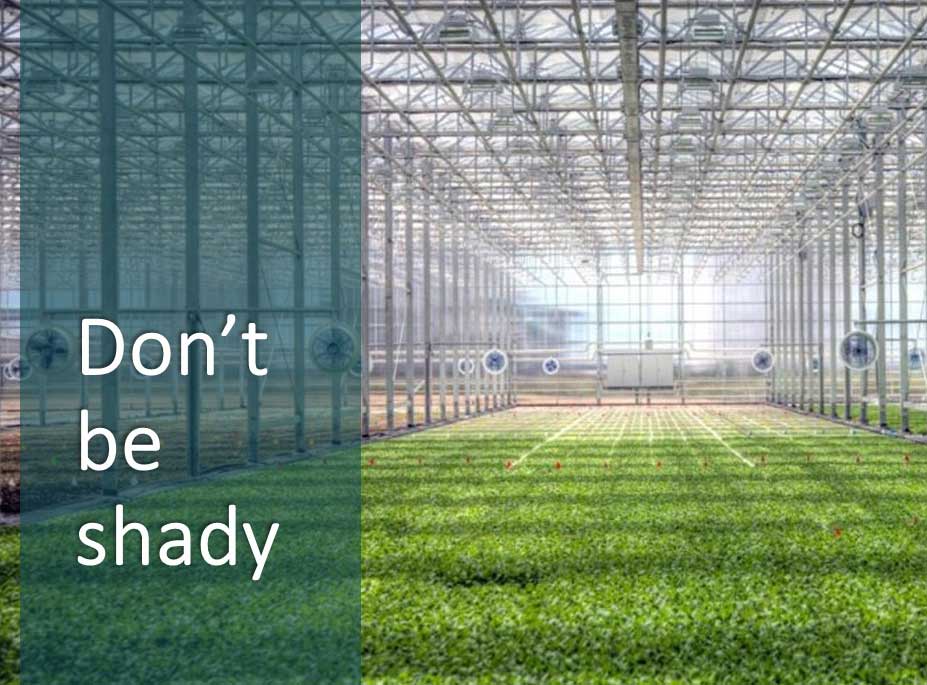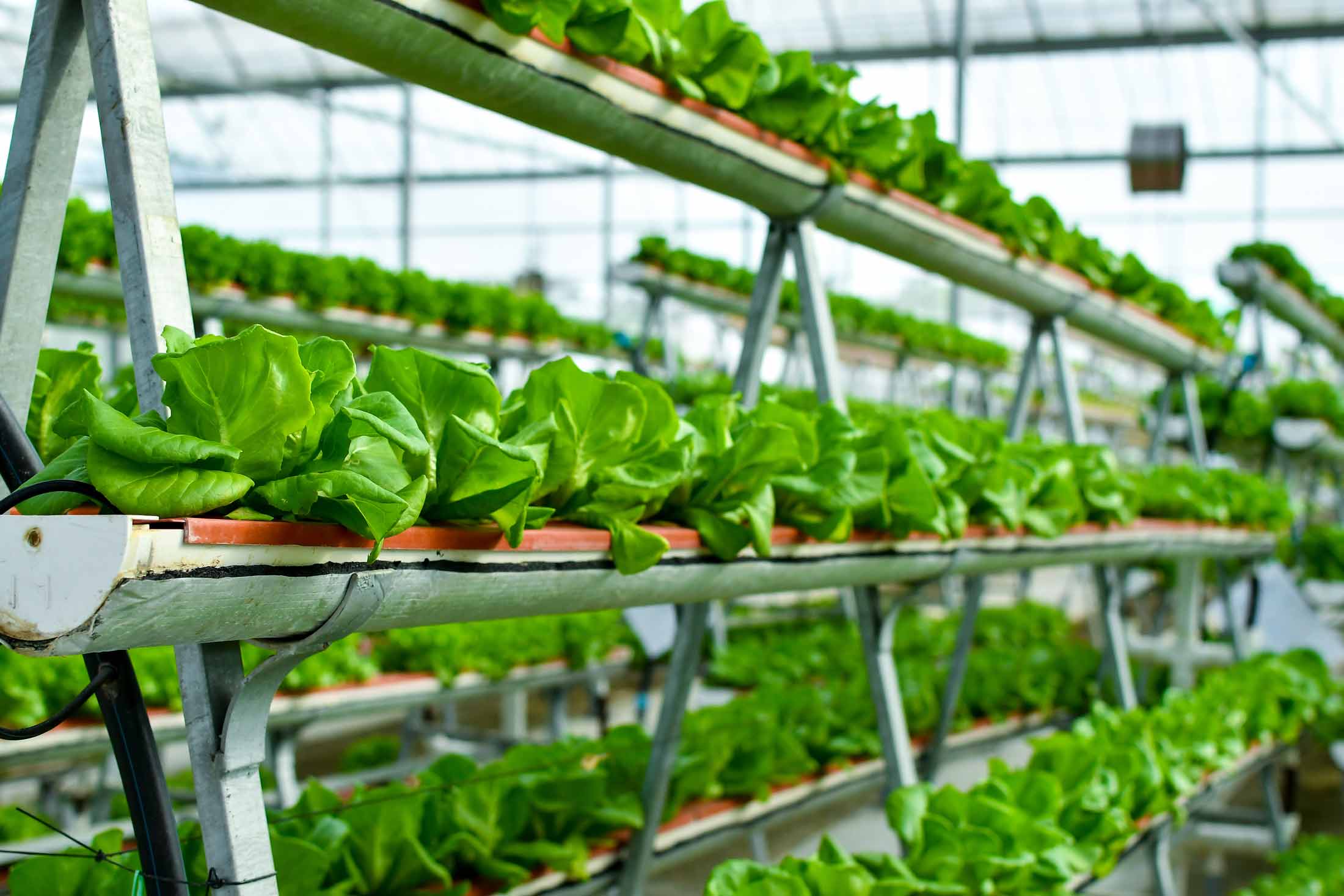Diffuse Light and Greenhouse Benefits

Greenhouse growers wishing to maximize production and achieve plant uniformity should check out the benefits of diffuse light. Diffuse light is a natural phenomenon whereby light is scattered as it passes through clouds, smog, and yes, the appropriate greenhouse glazing materials. By bathing plants in diffused light you can expect higher yields, higher leaf count, lower crop temperatures, and more uniform growth.
How to test if your greenhouses light is diffuse or direct
A simple way to tell if the light entering your greenhouse is diffuse is to look for shadows. If the physical structures inside the greenhouse casts shadows, then light is NOT diffuse, but rather direct sunlight. If the sun is brightly shining and there are no shadows, then the light is diffuse and is helping to maximize growth in the greenhouse.
The downside of direct light in the greenhouse
Direct light is just what it sounds like: light that falls directly on the surface of the plant. Direct sunlight not only casts shadows but results in hot spots and uneven plant growth. Also, direct light from the sun reaches mainly the top or canopy of the plant. This is a particular problem if you’re trying to grow in vertical racks or tiered benches. On the other hand, diffuse light can bend around corners, allowing it to penetrate the lower leaves and surfaces of the plant.
Diffuse greenhouse light is best for plants
Diffuse light reaching the lower leaves of a plant can increase photosynthesis and speed up plant growth by up to 25%. This will result in a quicker time to market–about three-fourths the time as plants grown in direct light. Diffuse light in a greenhouse can also increase flower production, reduce scorching, lower container temperature, reduce fungal spores, and decrease insect propagation (Bartok, 2017).
Improving light in your existing greenhouses

Unfortunately, clear coverings, such as glass, acrylic, and single-wall polycarbonate provide very virtually no light diffusion. Clear, twin-wall materials such as polycarbonate provide some diffusion as direct sunlight scatters in a narrow band running perpendicular to the flutes. By contrast, materials with a milky-white appearance, such as some polyethylene film, and Solexx greenhouse coverings provide the best light diffusion in a greenhouse.
If you don’t already have a greenhouse covering that diffuses light, you may be able to alter the covering on your existing greenhouse. For instance, you could mix latex paint and water and apply it to a glass covering. However, this is not suggested for a polycarbonate covering because it could interfere with the UV coating on the covering.
The industry standard 4 or 6 mil clear poly greenhouse coverings have limited light diffusion properties. To change this, an energy-saving, infrared inhibitor can be applied on the inner layer of a double poly covering to enhance light diffusion, according to an article published in Greenhouse Management by John Bartok, professor emeritus at the University of Connecticut. It will provide about 50% diffusion while only reducing light transmission by a couple of percentage points.
Bartok says there are other ways to increase light diffusion on existing greenhouses. For instance, a light exterior shade cloth can be utilized in late spring and summer to diffuse the light and lower the greenhouse temperature. A shade cloth will further cool the greenhouse, but will also reduce light transmission to your plants.
In search of the Ideal Greenhouse Covering
To realize the full advantage of light diffusion in a greenhouse, it is imperative–when you replace your existing covering or install a new greenhouse– that you purchase a light diffusing greenhouse plastic that takes full advantage of the natural phenomenon of diffusion. It’s important for the health of your plants and your bottom line. Greenhouses that utilize light diffusion simply grow healthier plants that finish quicker and are more uniform than those grown in direct sunlight.
Solexx greenhouse coverings are recognized in the industry as not only maximizing light diffusion that protects plants from intense heat, but also providing a durable covering that withstands the rigors of wind, rain, and whatever else Mother Nature sends our way.
Solexx greenhouse covering, manufactured and sold by Adapt8, is a long lasting durable greenhouse plastic covering with 100% light diffusion. It also has the best r-value in the industry, saving growers money at a time when energy bills are soaring. With a Solexx greenhouse cover there will be less condensation and more even temperatures, providing for an overall better growing environment and less stress on your plants.
Here are a few more benefits of Solexx greenhouse covering:
- Guaranteed 10-year prorated UV warranty.
- Retains heat 64% better than poly and has an r-value of 2.3R.
- Durable, withstanding heavy snow loads.
- No seasonal whitewashing, reducing the potential for injuries.
- Consistent growth throughout the growing cycle, reducing labor costs associated with rotating plants.
- Continuous roll eliminates seams.
- Fully recyclable, keeping plastic out of landfills.
- Inert and BPA-free makes it easy to disinfect without off-gassing.
Installation of Solexx greenhouse coverings is straightforward and is covered in an installation guide from Adapt8 or a tip sheet for smaller home greenhouse projects. In fact, if you can use a caulking gun and a drill to screw in the tap screws, you’re all set. In other words there is no need to call a service technician and rack up additional labor costs.
Sources: Bartok, John W. Jr. Light diffusion through greenhouse coverings, Greenhouse Magazine, Jan. 25, 2017.
Moore, Michelle A. Understanding Light from a Plants Perspective, Garden and Greenhouse Magazine

